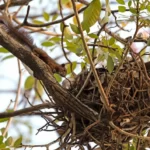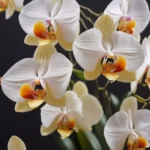Lavender, with its fragrant blooms and versatile uses, stands as a beloved herb in gardens worldwide. Beyond its aesthetic appeal, lavender can benefit from strategic companion planting, enhancing its growth and repelling pests. In this exploration, we’ll discover the art of companion planting for lavender, uncovering suitable plant partners that contribute to a flourishing and harmonious garden ecosystem.
- EASY TO GROW, QUICK TO BLOOM MARIGOLD – These marigold seeds for planting are easy to care for. No need for complicated steps in growing marigold seeds. They can quickly grow and bloom beautiful gold, yellow, and orange flowers in no time.
- PROTECT PLANTS FROM BUGS AND PESTS – These marigold seeds for planting are perfect companion plants for various vegetables and herbs. Marigold protects them from bugs and pests and helps hasten their growth.
- POLLINATOR-FRIENDLY MARIGOLD GARDEN – These tiny beautiful marigold flowers can bring you closer to nature. Expect frequent visits from butterflies, bees, hummingbirds, and other pollinators when you grow marigold flowers in your garden.
- ANNUAL HEIRLOOM SEEDS – Marigolds are annual seeds but may return due to dropped seeds in some zones. Marigolds are heat-tolerant and hardy plants that love full sun exposure. This pack of annual seeds can cover up to 100sqft when directly sown.
- USA-SOURCED, NON-GMO, SAFE SEEDS – These marigold seeds for planting (Tagetes erecta) are grown and harvested in the USA. guaranteed non-GMO and safe seeds, they are packed in resealable stand-up pouches to keep seeds fresh and secured until they are planted.
Suitable Companions for Lavender
Companion planting involves strategically placing plants together to maximize their mutual benefits. Lavender thrives when paired with certain companions that share similar preferences in soil, sunlight, and even provide natural pest control. Herbs like rosemary and thyme, with comparable growing conditions, not only complement lavender’s aromatic qualities but also deter pests collectively. Flowers like marigolds and echinacea not only add vibrant colors to the garden but also contribute to pest repellence and attract pollinators beneficial for both lavender and themselves. Understanding these compatible plant pairings unlocks the potential for a well-balanced and thriving garden.
Vegetables
Incorporating lavender into vegetable gardens can have mutually beneficial effects. Tomatoes, for instance, share sunlight and soil preferences with lavender. The aromatic properties of lavender may even offer protection against pests for tomato plants. Similarly, cucumbers, thriving in well-drained soil, find compatibility with lavender. The fragrant allure of lavender can act as a natural deterrent for pests that commonly affect cucumber plants, creating a harmonious relationship in the garden.
Trees and Shrubs
Lavender’s compatibility extends to trees and shrubs, making it a versatile addition to diverse garden landscapes. Roses, with their similar soil preferences, make ideal companions for lavender. Lavender’s scent may even assist in repelling pests that commonly affect roses. Fruit trees such as apple or peach, with their need for sunlight, find synergy with lavender. Beyond coexisting peacefully, lavender’s ability to attract pollinators can positively impact the fruit trees, promoting a healthier overall garden environment. The thoughtful integration of lavender with trees and shrubs enriches the garden’s aesthetic and functional qualities.
Considerations for Companion Planting
Successful companion planting requires careful consideration of various factors. First and foremost, understanding the soil conditions and pH levels that lavender thrives in is essential. Matching these conditions with suitable companions ensures a harmonious coexistence. Sunlight requirements are equally crucial, as lavender tends to flourish in full sun. Additionally, considering the pest-repelling qualities of both lavender and its companions enhances the overall effectiveness of companion planting. By paying attention to these considerations, gardeners can create an environment where lavender and its companions mutually benefit each other.
Conclusion
In conclusion, the art of companion planting opens a world of possibilities for enhancing the growth and well-being of lavender in gardens. From herbs and flowers to vegetables and trees, the strategic placement of compatible companions contributes to a thriving ecosystem. Lavender not only adds its unique fragrance and beauty to the garden but also benefits from the support of carefully chosen plant partners. As we explore the intricacies of companion planting, we uncover a pathway to a more resilient, vibrant, and sustainable garden where lavender can truly flourish. Experimenting with these companions allows for a personalized and delightful gardening experience, creating a space where beauty and functionality coexist in perfect harmony.





